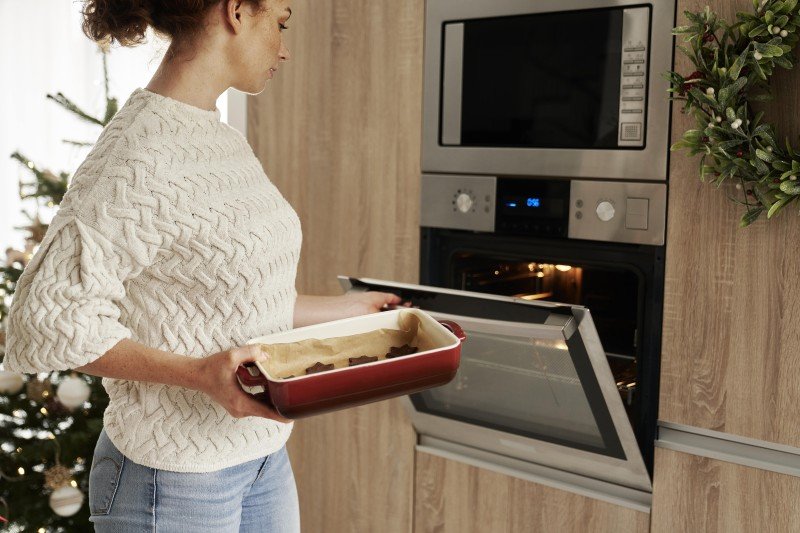Understanding Ovens and Hobs: A Comprehensive Guide
When it comes to cooking home appliances, ovens and hobs are amongst the most necessary tools discovered in modern-day cooking areas. They play pivotal functions in meal preparation, changing raw components into scrumptious meals. Comprehending the distinctions between various kinds of ovens and hobs and how to pick the best one can make a significant difference in cooking performance and food quality.
This post explores ovens and hobs in information, offering insights into their types, features, advantages, and typical FAQs. Whether you are a skilled chef or a newbie cook, this details will assist you make informed choices for your culinary requirements.
Types of Ovens
Ovens come in a number of types, each developed for particular cooking techniques and designs. Here is an in-depth appearance at the most typical kinds of ovens:
| Type of Oven | Description | Best For |
|---|---|---|
| Standard Oven | Makes use of heating aspects located at the top and bottom for even cooking. | Baking, roasting, and basic cooking |
| Convection Oven | Functions a fan that distributes hot air for fast and even cooking. | Baking pastries and cookies, roasting meats |
| Steam Oven | Utilizes steam to cook food, preserving wetness and nutrients. | Veggies and fish |
| Microwave Oven | Quickly cooks food utilizing microwave radiation. | Reheating and fast meals |
| Wall Oven | Built straight into the wall for space-saving cooking services. | Small kitchen areas and modern-day styles |
| Ability Level | Supplies multiple cooking modes including baking, broiling, and toasting. | Flexible cooking requires |
Kinds of Hobs
Hobs, likewise called cooktops, can be found in various types based upon their fuel source and design. Comprehending these alternatives can assist in discovering the best suitable for your kitchen setup:
| Type of Hob | Description | Best For |
|---|---|---|
| Gas Hob | Uses gas flames for cooking, providing instant heat control. | Standard cooking approaches |
| Electric Hob | Uses electric coils or induction components to heat pots and pans. | Even heat distribution |
| Induction Hob | Employs electromagnetic energy to straight warm pots, offering quickly and efficient cooking. | Energy-efficient cooking |
| Solid Plate Hob | A type of electric hob with strong plates that takes time to warm up but maintains heat well. | Slow cooking |
| Ceramic Hob | Features a glass-ceramic surface area permitting for simple cleaning, with electric heating elements below. | Visual appeal |
Elements to Consider When Choosing an Oven and Hob
Selecting the best oven and hob mix needs careful consideration of numerous factors. Below is a list of essential aspects to keep in mind:
Cooking Style
- Are you an everyday cook or an occasional baker?
- Do you choose steaming or frying?
Kitchen Size
- What space is offered in your kitchen for the appliances?
- Will you need integrated or freestanding models?
Fuel Source
- Do you have access to gas, or would you prefer electric?
- Are you interested in induction cooking technology?
Spending plan
- What is your budget for acquiring an oven and hob?
- Are you considering a high-end model or a more affordable choice?
Energy Efficiency
- Are you wanting to minimize your energy usage?
- Do you choose home appliances that come with high-efficiency scores?
Advantages of Ovens and Hobs
Both ovens and hobs bring unique advantages to the kitchen. Here's a summary of some advantages:
Ovens:
- Versatility: Able to deal with a wide variety of cooking methods from baking to roasting and broiling.
- Constant Results: Even heat distribution offers trusted cooking outcomes.
- Large Capacity: Ideal for big meals and batch cooking.
Hobs:
- Control: Gas hobs provide instant heat changes, helpful for accurate cooking.
- Performance: Induction hobs are understood for their quicker heat-up energy and times efficiency.
- Independent Cooking: Multiple hobs permit cooking numerous meals all at once.
Selecting the right ovens and hobs is crucial for anybody wanting to enhance their cooking skills and kitchen efficiency. By comprehending Online Cooker Sales of each appliance, alongside their benefits and functions, consumers can make educated choices that accommodate their culinary routines and preferences.
As cooking areas progress, so do the technologies surrounding cooking appliances. Investing in the ideal combination of an oven and hob can lead to better cooking experiences, higher food quality, and even pleasurable time spent in the kitchen.
Regularly Asked Questions (FAQs)
What is the distinction in between convection and standard ovens?
- A convection oven uses a fan to flow air for even cooking, while a traditional oven relies just on leading and bottom heating aspects.
How do induction hobs work?
- Induction hobs use electro-magnetic fields to straight heat up pots and pans made of magnetic materials, resulting in much faster cooking times and more energy efficiency.
Are gas hobs safer than electric hobs?
- Safety depends upon usage and installation. Gas hobs need correct ventilation and can provide a fire threat, while electric hobs may posture threats of burns due to their hot surfaces.
Can I bake in a steam oven?
- Yes, a steam oven can be used for baking, often leading to moister and fluffier baked goods, especially breads and pastries.
What should I try to find in an integrated oven?
- Try to find functions like capacity, cooking modes, energy performance rankings, and ease of cleaning.
By thinking about the info and guides offered in this post, readers can easily navigate the world of ovens and hobs, ensuring that they choose the very best home appliances to fit their cooking requirements.

